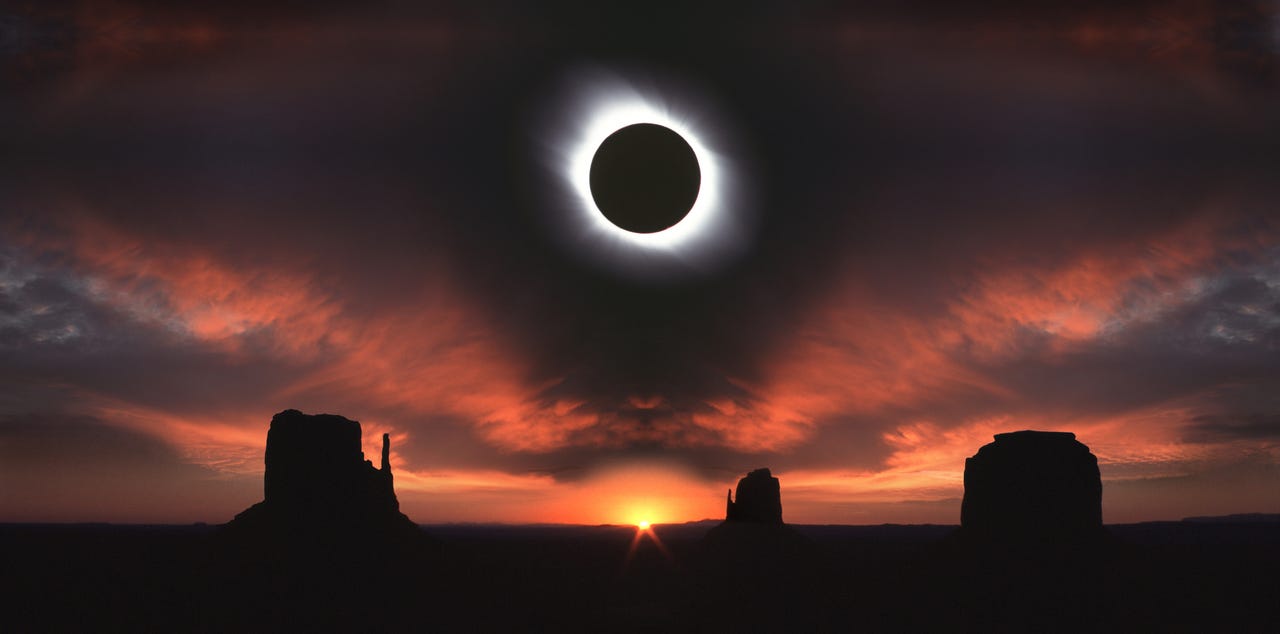'ZDNET Recommends': What exactly does it mean?
ZDNET's recommendations are based on many hours of testing, research, and comparison shopping. We gather data from the best available sources, including vendor and retailer listings as well as other relevant and independent reviews sites. And we pore over customer reviews to find out what matters to real people who already own and use the products and services we’re assessing.
When you click through from our site to a retailer and buy a product or service, we may earn affiliate commissions. This helps support our work, but does not affect what we cover or how, and it does not affect the price you pay. Neither ZDNET nor the author are compensated for these independent reviews. Indeed, we follow strict guidelines that ensure our editorial content is never influenced by advertisers.
ZDNET's editorial team writes on behalf of you, our reader. Our goal is to deliver the most accurate information and the most knowledgeable advice possible in order to help you make smarter buying decisions on tech gear and a wide array of products and services. Our editors thoroughly review and fact-check every article to ensure that our content meets the highest standards. If we have made an error or published misleading information, we will correct or clarify the article. If you see inaccuracies in our content, please report the mistake via this form.
April 2024 solar eclipse FAQ: How to watch, what you need, and everything else to know


When is the 2024 solar eclipse?
The 2024 solar eclipse will occur on Monday, April 8, 2024. Its path will cross over Mexico, the United States, and Canada; the first area to see the eclipse will be the Pacific coast of Mexico at around 11:07am PDT.
NASA offers a helpful map for the eclipse path, complete with estimated times for when people in different areas will see the eclipse totality (when the moon completely covers the sun).
Why is the 2024 solar eclipse so special?
The 2024 eclipse is special for several reasons. It will be the first total eclipse visible in Canada since 1979, Mexico since 1991, and the US since 2017. It's also special because scientists anticipate that the eclipse totality will last twice as long as the 2017 eclipse (and the longest totality in over a decade), with up to 4.5 minutes of darkness. The path of the totality is also expected to be as wide as 115 miles in some spots, giving more people the chance to watch the eclipse.
Where is the best place to watch the 2024 solar eclipse?
You'll need to be in the direct path of the eclipse to be able to see it. Thankfully, NASA has a handy table with major cities and estimated times so you can plan your eclipse road trip or cheeky day off work.
Also: Want to watch the eclipse on April 8? Google has a free solution
The best place to watch the cosmic show is anywhere with a clear view of the sky. You'll want to avoid places with tall buildings or trees that can obscure your view, and cloud cover can put a damper on your plans for the day. So, check your local weather forecasts for the week, and call ahead to public areas to confirm any special policies for viewing the eclipse. Many cities along the eclipse path are expecting large influxes of visitors and tourists for the event, so make sure you plan hotel stays, meals, and picking out a good observation spot accordingly.
How can I safely watch the eclipse?
Protecting your eyes from dangerous UV and infrared radiation is rule number one during a solar eclipse. While it's never a good idea to look directly at the sun, it's tempting to do so during an eclipse. Doing so, however, puts you in danger of "sunburning" your eyes with the UV and infrared radiation that still gets beamed to Earth during an eclipse. This sunburning could lead to discomfort and permanent damage to your vision.
The best way to safely view a partial or total solar eclipse is with a pair of special glasses, binoculars, or telescope that has had its lenses treated with a special filter coating for eclipse observation. You can also use a welding mask or goggles if the lenses are tinted to shade 12 or darker to protect your eyes.
You can also make a camera obscura from a cardboard box or kitchen colander. And if push comes to shove, you can always poke around YouTube and Twitch to see if anyone has set up a livestream of the eclipse.
What are the best solar eclipse glasses?
When you shop for solar eclipse glasses, you should ensure they are ISO 12312-2-certified to protect your eyes from harmful UV and IR radiation. This information should be easy to find on the glasses or their packaging. Regular sunglasses are not ISO-certified and won't provide adequate eye protection.
Also: Don't wait to buy your solar eclipse glasses. These are the best ones
You can also find ISO-certified binoculars and telescopes designed for eclipse viewing. You'll get a magnified view of the event, letting you better appreciate details like the corona. There are also special filters you can buy for DSLR and smartphone cameras so you can watch the eclipse on your phone or take photographs.
The Celestron EclipsSmart 3-piece kit is our pick for the best solar eclipse glasses. The kit comes with a pair of durable, plastic-framed glasses, a photography filter for smartphones and DSLR cameras, and a 32-page booklet with tips and advice on where, when, and how to view the 2024 eclipse.
Can I use my phone to view the eclipse?
You can use your smartphone or DSLR camera to view and photograph the eclipse. But you must have a proper solar filter to protect your eyes as you look through the viewfinder and protect your delicate camera equipment from dangerous and intense UV or IR radiation.
Also: Could the eclipse burn out your iPhone camera? The experts weigh in
There are many affordable, semi-disposable options for a smartphone, such as the VisiSolar 2-pack, which lets you take quick photos and videos and can be recycled after the event. If you're using a DSLR camera, you'll need a proper lens filter like the K&F Concept neutral density filter, which is designed to be used with your normal zoom or telephoto lens. This tool also has proper coatings and filters in place to protect more sensitive components in your DSLR camera from radiation damage.
As you'll use an extremely darkened filter, you should adjust your ISO and aperture settings for proper exposure times and shutter speeds.
Will it get completely dark during the eclipse?
Yes, but not during the entire eclipse. There is a point called the "totality" when the moon completely obscures the sun. This point is also when you may see an iconic solar corona and a few of the brightest stars and planets as the sky darkens.
Also: Fedoras in Space! Red Hat helps with NASA's Artemis Lunar missions
For the April 8, 2024 eclipse, NASA estimates that the totality could last up to 4.5 minutes and may be seen in a 115-mile wide path across North America, starting on Mexico's Pacific coast and ending on Maine's Atlantic coast about four hours later.
How long is the 2024 eclipse totality?
Not every eclipse will have a totality event, and not every totality is the same. NASA estimates the 2024 totality could last up to 4.5 minutes over each zone. This length means you'll have plenty of time to take photos and videos to mark the occasion.
When is the next total solar eclipse?
If you miss the 2024 solar eclipse, the next one will be visible over the continental United States on August 23, 2044.
However, plenty of other total and partial solar eclipses will be visible over other parts of the world. Check out NASA's cool infographic that shows the paths of expected eclipses until 2040.